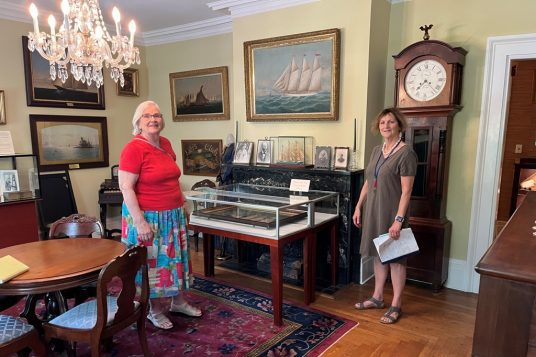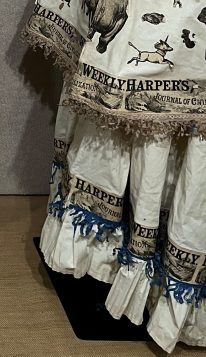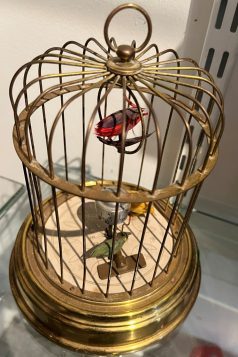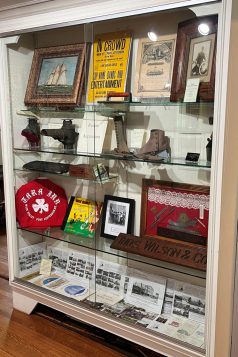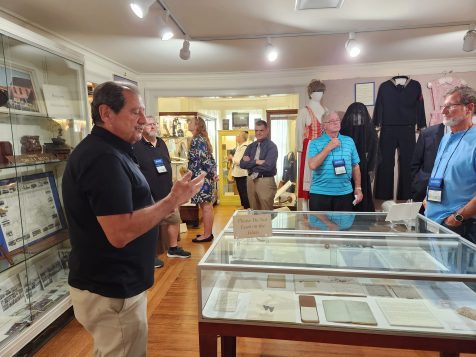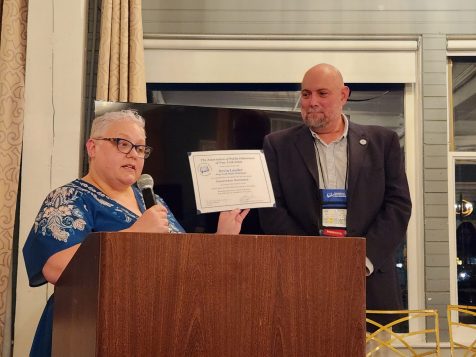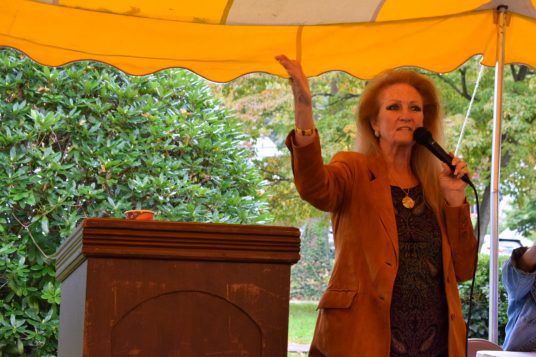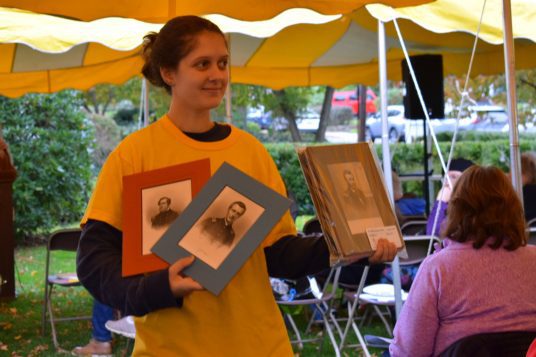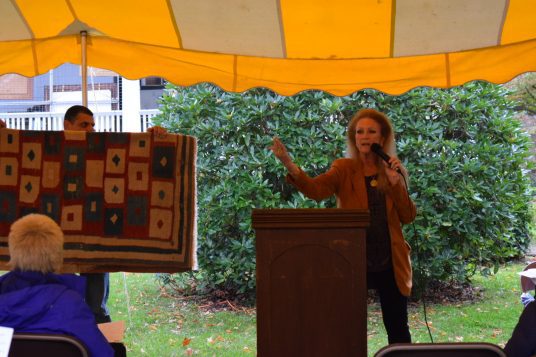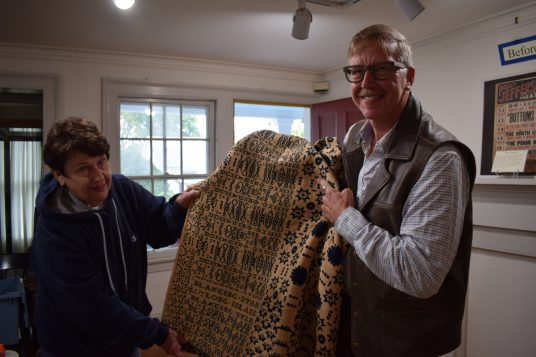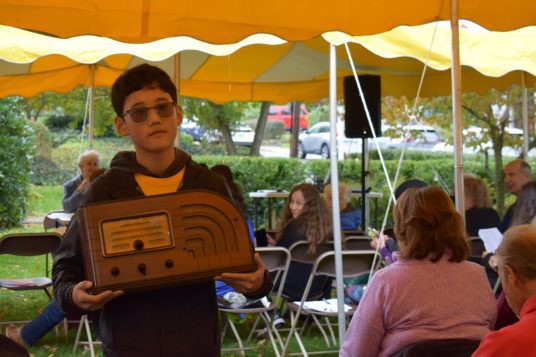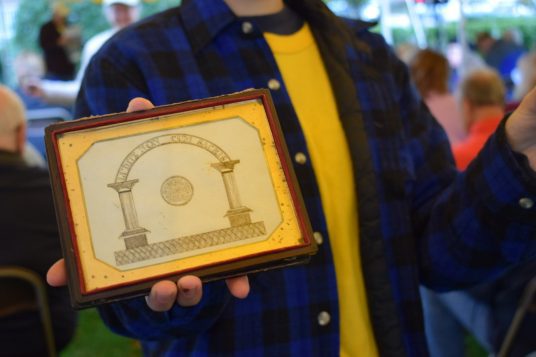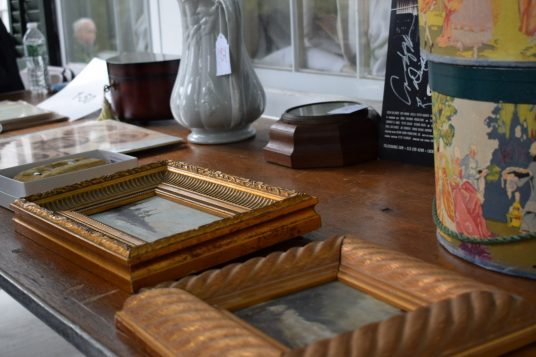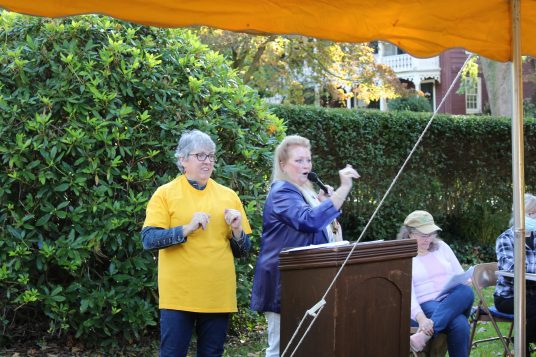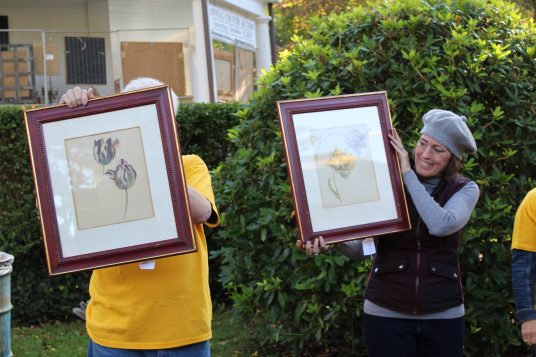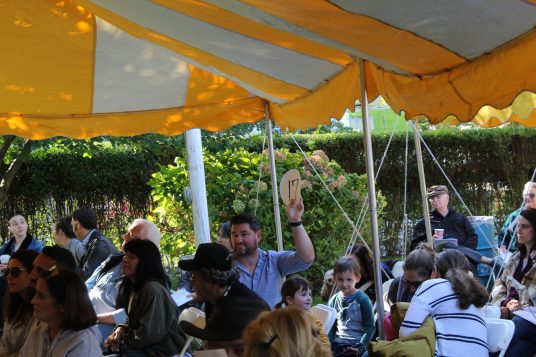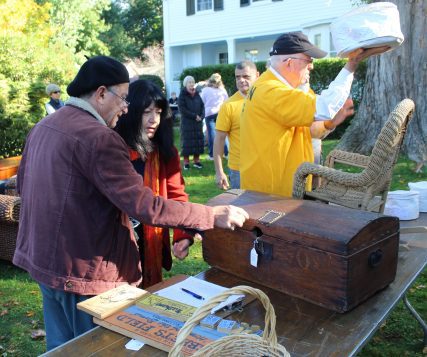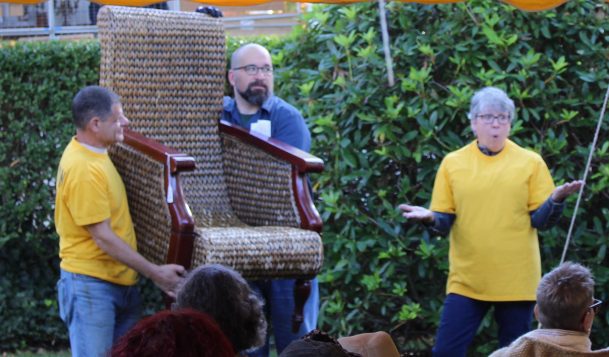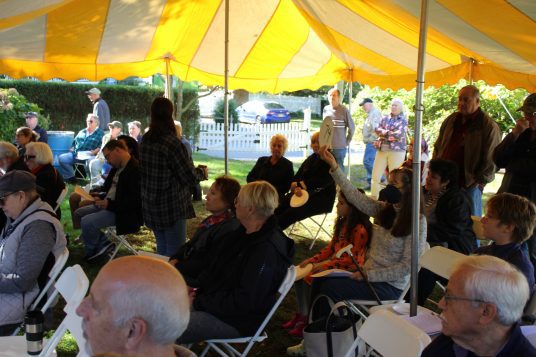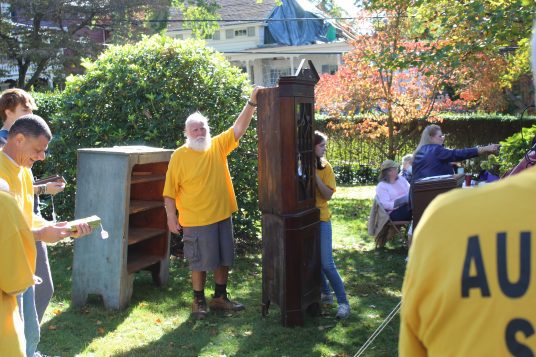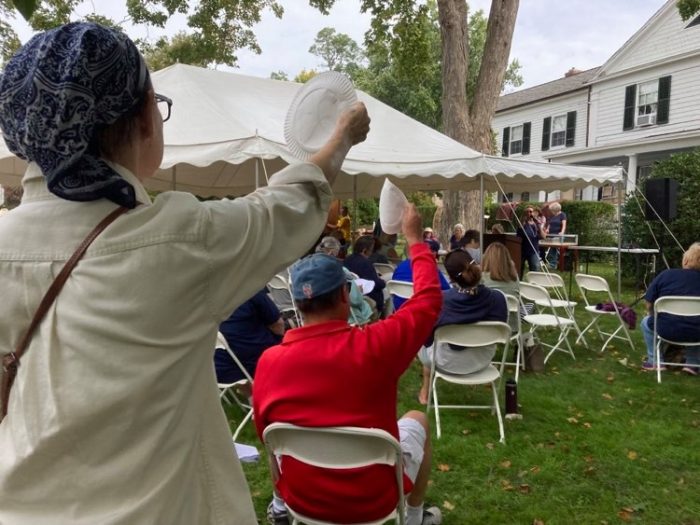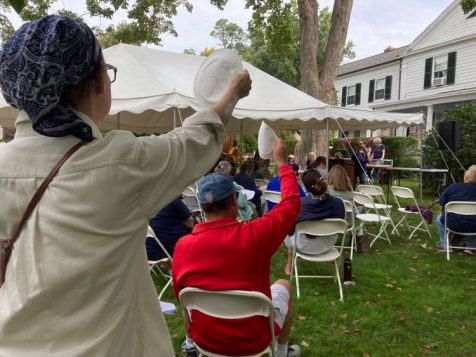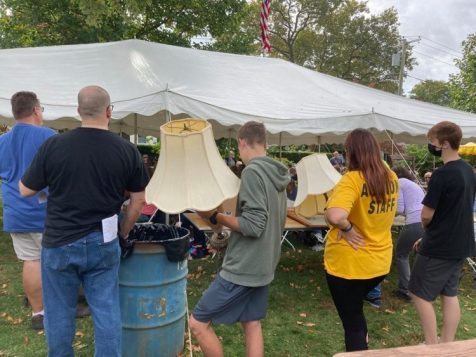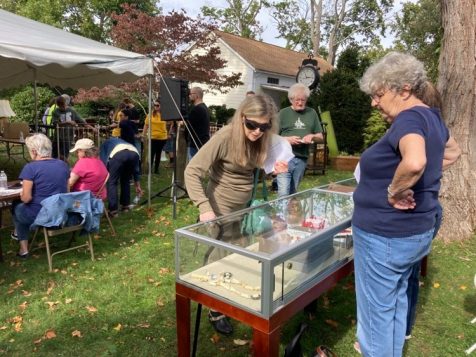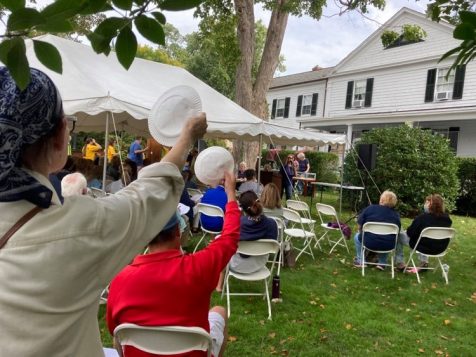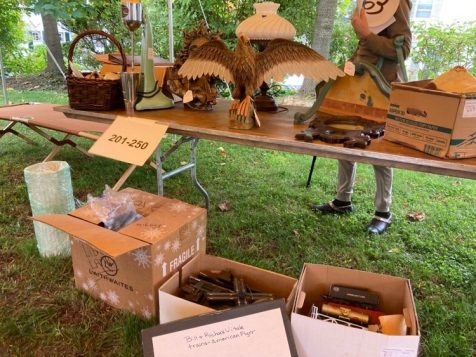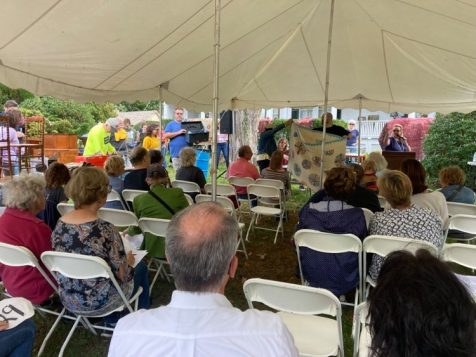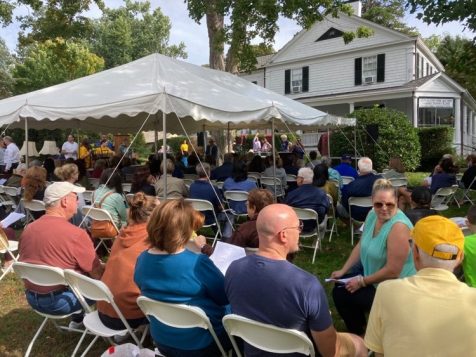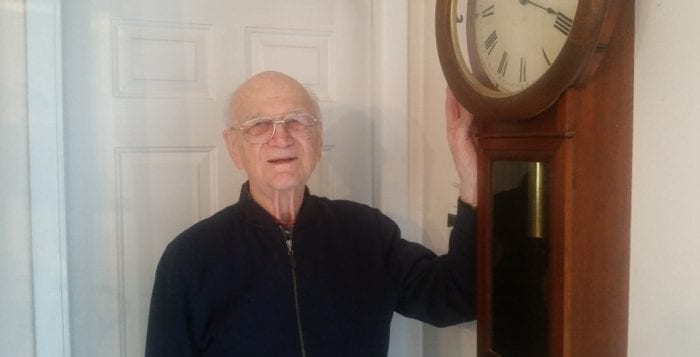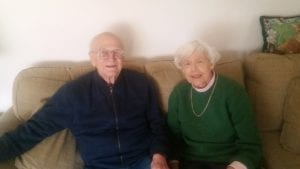By Beverly C. Tyler
Driving along Main Street in Port Jefferson, turn east onto East Main Street and bear right at the historic Biddle fountain reproduction onto Prospect Street. On your left at number 115 is the home of the Historical Society of Greater Port Jefferson in the John R. Mather house and grounds. Mather was a famous shipbuilder in Port Jefferson and a descendant of local shipbuilders. He built the home in the 1840s and added the present front of the house in the 1860s. His son John T. Mather bequeathed funds to create a community hospital. The J.T. Mather Memorial Hospital opened on New Year’s Eve 1929.
My wife Barbara and I were welcomed to the house by guide Cathy Duffy who began with the 1860s parlor filled with period pieces, maritime paintings and artifacts. The next room, listed as the library, includes a wonderful collection of half-hull models used as one of the first steps in ship design and construction. One of these half-hull models is of the schooner yacht “Wanderer” which was built in East Setauket in 1857 and became an infamous slaver, transporting more than 600 enslaved Africans from the west coast of Africa to Jekyll Island, Georgia in 1858.
In the next room, in a case labeled “Recent Acquisitions” is a painting of the “Wanderer.” This room, guide Duffy noted, is the main exhibit room for the 2025 exhibit “Treasures From Our Attic.” The “treasures” here also include hand-made quilts, costumes, samplers, and three dresses. The most interesting item was a paper dress made for an 1876 masquerade party. The dress was constructed from current issues of Harper’s Weekly and was worn by the party hostess, Mrs. James E. Bayles. Engraved pictures showing scenes of the day decorated almost every inch of space on her dress. The other two dresses are a wedding dress and a Campfire Girl’s uniform labeled “Woodgatherers.” It includes a beaded necklace of “badges” earned.
The grounds and buildings include a tool shed with maritime tools and artifacts, the Dr. R. Sherman Mills general store and post office, and a replica of a sail loft on the lower level. The archival building includes a large collection of documents and photographs which is available to researchers by appointment.
For me, the number one attraction on the grounds is the Spinney Clock Building, which was added to the property in 2000. Inside are more than 200 magnificent clocks donated to the historical society by Tex Spinney. The collection ranges from tall grandfather clocks to mantle clocks with beautiful hand-painted scenes. A grandfather clock, made by Tiffany, is nine feet six inches high with a fully carved case. A black marble astronomical clock includes a barometer and calendar and a mouse clock strikes “hickory, dickory, dock.” Volunteer clock enthusiasts from the Spinney Clock Collector’s Guild maintain the collection and offer classes in the care and repair of antique and newer timepieces.
When you visit the John Richard Mather house, be sure to pick up the three free “Historic Walking Tour guides that describe the homes, sites, businesses and features of the historic Port Jefferson downtown and harbor areas. Each guide covers a specific concentrated area with a minimum of walking, so enjoy this area, rich in history and beauty.
Mather’s home, the surrounding museum buildings and the consignment shop are open Wednesday – Sunday 12-4 P.M. through October 5th.
Beverly Tyler is Three Village Historical Society historian and author of books available from the Three Village Historical Society, 93 North Country Rd., Setauket, NY 11733. Tel: 631-751-3730. WWW.TVHS.org

